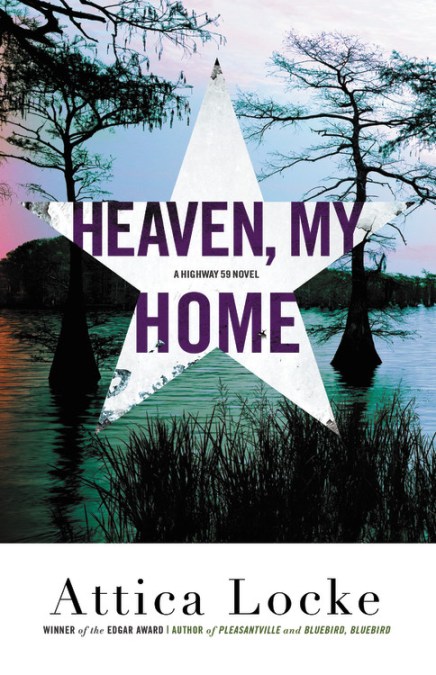 |
| Playa, Summer Lake, Oregon |
|
Amidst an anxiety-inducing election cycle, the loss of some
of our great musicians, an unstable world, and whatever is going on in your personal
life (I know many of you have had a tough year), I hold onto the belief that
art carries us, gives us means of expression (meaningful expression, the
opposite of trolling), and fills us with hope.
Art in all its forms I believe is evidence that humans are
worthy of existence. The only other evidence is our social contract to help
others in times of need.
Right now, after a tough personal beginning to the year, I
have the good fortune to be at Playa, a month-long residency in southern Oregon
to work on Vida Flats my memoir that
takes place during the early 70s on the McKenzie River. The memoir has been a
work in progress over the years with journaling, scene writing, examining,
researching—everything that memoir demands.
Writing memoir leaves me psychologically naked, heart cut
open, old wounds surfacing, and ultimately in the end is a method of holding
myself accountable for what happened to me.

For the first two weeks at Playa, I spread printouts on my
bed of everything I’d written so far and went at them with scissors and tape,
eliminating replications, combining scenes with notes, moving notes around,
highlighting the most emotional scenes, axing bad writing and tirades—well you
get the idea. I cried. New memories surfaced. I tried to have as much compassion
for my twenty-four-year old self as I have now for others at that age. Memoir is
not about blaming others, even if they’ve done you harm. Memoir is about
writing truth, my messy truth, about my choices when I experienced harm or love,
ignorance or awareness, failure or success. Memoir is mainly about recognizing
that big conscious moment when I knew life had to change, or else. It’s about what
I did, or tried to do to make that change. It didn’t happen on the first attempt,
or even the second, but it did happen.
So what does this have to do with turning to crime?
This year I had one of those moments when I knew my writing
life had to change. I’d written three novels, represented by three incredibly
hard working agents, but none sold. This last one is still alive, but I was
tired, burned out. I could indie publish all three, but I was too tired and
burned out to do that. I knew I needed to change a few things in the third
novel, but I just couldn’t go back to it, not yet. Plus I had this memoir. I
wasn’t having fun anymore, not that writing a novel or memoir is fun, but I’d
lost the passion I’d had for years and seriously considered giving up writing.
Then somewhere along the line, I had an idea. Why not write
something fun and short. When I thought
that, my shoulders relaxed. The pit in my stomach dissolved. I no longer had
heartburn. Writing something fun sounded … fun.
But what would be fun to write? Lately, amidst reading
memoirs and literary novels, I’d been reading Scandinavian crime novels,
recently ones written by women. My husband liked to tease me because I was
hooked on what he called “murder and sex” series like “The Tunnel,” “Rebus,” “The
Night Manager,” “The Americans,” and “Shades of Blue.” I said, “No, not the
murder and sex. I like the politics and the flawed characters.” As a writer, I
think of myself as a behavioral diagnostician. What makes people do what they
do? What are their motives? What personal demons or desires drive them? How do
their actions affect world events, culture, politics, the economy?
When I was a kid, I read Nancy Drew stories and a mystery
series my English relatives sent at Christmas.?
During my teens, I read in bed under the blanket with a
penlight until one or two in the morning, stories by de Maupassant, Somerset
Maugham and O. Henry. Twisty, dark, atmospheric stories I sucked down like
cherry sodas.
Mysteries. They would be
fun to write, but they weren’t serious
works.
Then I remembered Rick Moody.
Rick and I met at Vermont Studio while I was there on a
month-long writers residency. He’s the author of one of my favorite novels The Ice Storm, also made into a movie.
The Ice Storm hit
something deep in me. Rick and I were New Englanders from ultra-conservative
families, instilled with a Puritan work ethic, and discouraged from following
our creative dreams. I’d wanted to be an artist. He’d wanted to be a musician. We
compared stories about our upbringing. He attended a prep school in New
Hampshire near my hometown, but not the prep school in my hometown. The prep school in my hometown of Tilton, New
Hampshire where I went to high school sat high on a hill overlooking the mill
town and main street. The “preppies”
often hung out at the same pizza joint I did and preyed on the “townies.” I was
not a popular target so I watched in fascination. I also observed what went on
in the homes of our New England picture-perfect towns, something Rick depicted
well in The Ice Storm. Something
Grace Metalious captured decades earlier in Peyton
Place.


In Vermont, Rick and I walked through a familiar stark
winter landscape and, inside VSC’s library, he gave me feedback on the first
twenty-five pages of my work-in-progress. When I returned to my room, I looked
at the pages and at the top of the first page he wrote:
“You’ve got the chops, now loosen up.”
I’ve puzzled over this for years. At the time, I was so
incredibly grateful for those words “You’ve got the chops,” that I didn’t
realize I didn’t know what he meant by “loosen up.” Was he referring to my
language, the voice? The way the story unfolded? Too structured? Too forced? And
why, after these many years, am I remembering this now?
I noodled on that for a few days, finally admitting that my
first novel was the one I loved writing the most, a dark story about a young
woman’s coming of age in the claustrophobic controlled scary confines of a New
England town run by her father who was afraid of the mysterious woman who moved
in next door. It contained a mystery!
I also reminded myself how much I enjoyed writing “The Hotel
Deluxe.” I’d been on assignment for an upcoming online travel magazine where
I’d been sent to Portland, Oregon to write a travel piece. I was told to let my
imagination fly and encouraged to write something “different.” So I embedded a
travelogue in a mystery. I didn’t kill anyone, but the voice was pure noir.
Noir.
I got goose bumps. Always a good sign. I also had to laugh. Mom
once described me as “a good girl who wanted to be a bad.” Writing mysteries
was for good girls. Noir was for bad.
Why it took me so long to figure this out, I have no idea.
During college I’d studied film noir in a course titled “Film as Literature.” We
watched and dissected films, and Matty Walker, Catherine Tramell, and Lynn
Bracken, characters motived by hypocrisy, love, betrayal, and money, captivated
me. Flawed, intriguing, greedy, messed up characters. No one you’d want to be
friends with, but damn! I sure could have fun writing them.
But the book marketplace was flooded with mysteries and
thrillers. What could set my short noirs apart from the rest? The travel noir
piece I wrote gave me an idea. Why couldn’t I set each noir in a place Dan and
I had traveled? Weren’t there people who would love to know more about the
setting, the places mentioned in the story, if they knew they were real? I
could add a back section to each short story with links and photos and. … More
goose bumps.
Plus not everyone had the time to read or even focus on
novels. My short noir-travel stories could be read while sitting in the car
waiting for the kids to get out of school, during the inevitable long wait at the
doctors, eating pie and drinking coffee at a café while their car was being
fixed. With the back travel section, the reader could plan a trip to the
setting or just live vicariously off the photos and links.
Sometimes life works in your favor. Over the 2015 Holiday
season on a two-week vacation in Paris with Dan, I’d kept a journal and saved every
receipt and brochure. Gold! I fleshed out a character and a plot, and wrote my
first Noir Travel Story “Revenge in Paris.”
And that’s why and how I ended up writing crime, or more
accurately noir.
My first e-story in the series “Revenge in Paris” will
launch December 1 to coincide with the holidays, and the story will be FREE to
download to your e-reader. I’m giving it away to celebrate my launch of the NOIR
TRAVEL STORY SERIES. Plus, you’ll have access to a gift card to print out and
insert in your holiday cards so you can give this free NOIR TRAVEL STORY to
everyone you know.
Because you’ve
been with me a long time, you get the first peek at the cover—before I reveal it
on my social media!
Thanks for following me. You’ll receive an announcement when
the e-book is available.
And, please, if I end up in jail, post my bail. I’ll mention
you in the credits of my next noir.
Au revoir,
Val
For more fun with NOIR click on these links:
WOMEN CRIME WRITERS ARE NOT A FAD





























